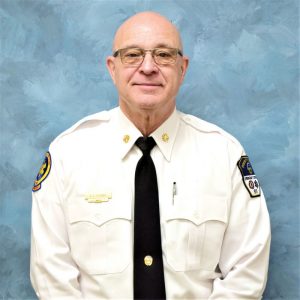Emergency Services director retiring after 42 years
Published 12:00 am Thursday, February 27, 2020
|
Getting your Trinity Audio player ready...
|
Emergency Services Director Dan Ozimek is retiring from Forsyth County after more than 42 years of service.
Ozimek joined Forsyth County Emergency Medical Services as a Basic Emergency Medical Technician (EMT) in 1977. At the time it was a new department, which had just begun in 1968. Prior to that, funeral homes handled ambulance service. The first ambulances Ozimek rode in were hearses that the county got from funeral homes.
“At that time, we were only running 4-5 ambulances to cover the whole county,” he said. “Today during peak call volume, we run up to 18 ambulances to cover the county.”
He left a job as a computer operator at RJ Reynolds to become an EMT. He said the TV show “Emergency!,” which helped popularize EMS and paramedics, stirred his interest in the emerging field. Volunteering for the Vienna Volunteer Fire Department’s Rescue Squad and riding with the Forsyth County Ambulance Service on weekends got him “hooked” on the profession.
He graduated from the second class to go through the county’s paramedic program in 1979. He served as a paramedic in the field until 1988. He continued volunteering as a firefighter and rescue squad member. He also taught EMT and paramedic training for several years at Forsyth Tech.
In 1988, he became assistant training officer for Forsyth County and was promoted to training officer in 1990, putting him in charge of training the county’s ambulance service.
In 1992, he became Forsyth County EMS operations officer, overseeing daily operations. He became EMS director in 2000. In 2009, he became director of the new Emergency Services Department, which combined EMS with county fire and 911 communications. He said the three divisions work well together.
“It’s really about delivering a quality product to residents on their worst day,” said Ozimek.
He’s seen significant changes over the years in Emergency Services. When he started, paramedics had to call doctors for orders over the radio and couldn’t do anything until they heard back. Now they have set protocols approved by the system’s medical director that allow them to respond to most situations without doctors’ orders.
Training requirements for Emergency Medical Services, the fire service, and 911 communications have increased substantially, with all three divisions playing vital roles in calls. The 911 telecommunicators, using a computer aided dispatch (CAD) system, are now trained using protocols to key in what’s going on in a call so first responders and paramedics know what to expect when they get there. The 911 telecommunicators can also talk callers through performing first aid and give CPR instructions until help arrives. County and city firefighters are now the first responders on the scene who access the patient and provide treatment, which can include using an AED defibrillator, until the paramedics arrive.
“That model has really impacted survival rates in the county,” said Ozimek.
During his tenure as director, EMS changed from 24-hour to 12-hour shifts to help deal with high call volumes. EMS also went from being located in just one building to having satellite stations, and strategically locating ambulances in different areas of the county with higher call volumes. EMS also developed a CAD system that can locate the closest ambulance to send on a call.
EMS has also added community paramedics, who connect frequent EMS callers with resources that definitively address their needs to reduce their dependence on the 911 system and keep them out of emergency rooms.
He said that he’s grateful to have worked with a dedicated team at Emergency Services who really deserve the credit for the department’s many improvements.
“We, as a system, could not have accomplished what we have without the dedicated individuals in this profession in EMS, fire and 911,” said Ozimek. “It really boils down to the work that they do everyday.”




